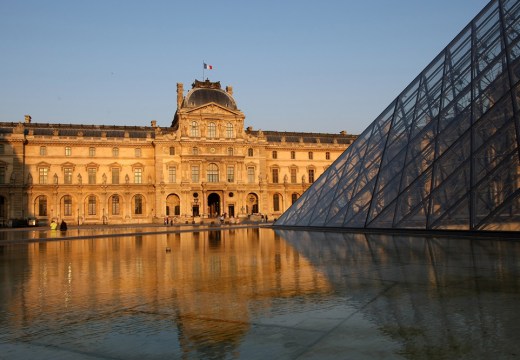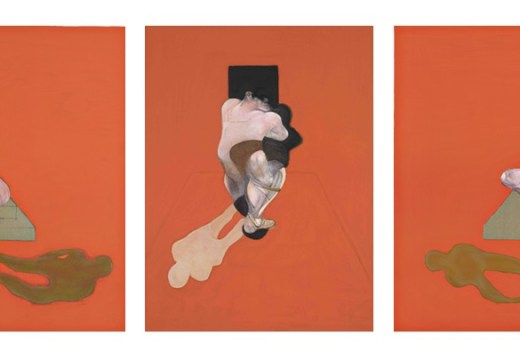Many of us have been taught to view Poussin primarily as a secular classicist, perhaps even a libertine. But the ability to paint a good orgy, as Poussin certainly could, never made a religious painter irreligious – certainly not in the 17th century. The main concept of the Louvre’s exhibition ‘Poussin and God’ is a simple one: it explores the often neglected spiritual side of the artist’s career. But its real interest lies beyond that. The question is not was Poussin a religious painter, but what kind of religious painter?
Poussin’s earliest known work, Saint Denis the Areopagite encapsulates two tendencies in his art, the iconic and the narrative. Saint Denis is a timeless icon in space, almost a painted sculpture, while the lively background presents a fluid narrative running from left to right. The iconic lends itself to the spiritual, the narrative to the human – and it is exactly this conundrum which Poussin tackled and tried with some success to solve throughout his career. His ascensions and assumptions, suspended wonders of group composition, are iconic; but in his grand biblical narratives (the Gathering of Manna, for example, or Rebecca at the Well) the painter of form is also the architect of human actions and emotions. In New Testament works such as the Healing of the Blind of Jerico and Woman Taken in Adultery, the Son of God may be present but Poussin is clearly more concerned with establishing the character of his protagonists – their human dimension – than a sense of abstract spirituality.
Poussin is at his best when he uses all the elements of painting – figures, still-life, landscape, and buildings – to create works which seem as spiritual in technique and composition as subject. Such are his great Holy Families, including the Virgin of the Steps, and the late sacred landscapes of the Four Seasons. The latter are strange and deeply moving compositions, which give you a simultaneous feeling of knowing and loss, as powerful as a parable or indeed an Ovid story.
The exhibition suggests that Poussin was part of a definable Gallican movement in French painting. Graceful, cerebral, serious, it was inflected by Port-Royal, by co-existence with Protestantism (which until 1685 was legal in France), and the French school of spirituality founded by Pierre de Bérulle. From this perspective the National Gallery’s Annuciation is one of the most important religious paintings of the 17th century, and in this show. It is manifestly a work of Cartesian mysticism, where the appearance of the angel Gabriel is interiorised by the Virgin as a vision rather than an exterior event.
Of course, the art and gods of antiquity also profoundly influenced Poussin, and the fact that he could reach spiritual peaks in profane works as well – Et in Arcadia Ego and the great Pyramis and Thisbe landscape are good examples – only further confirms the thrust of this exhibition. In Poussin’s world there was no Ovid without God, no Arcadia without Paradise.
‘Poussin and God’ is at the Louvre, Paris, until 29 June.
Related Articles




















![Masterpiece [Re]discovery 2022. Photo: Ben Fisher Photography, courtesy of Masterpiece London](http://zephr.apollo-magazine.com/wp-content/uploads/2022/07/MPL2022_4263.jpg)
‘Like landscape, his objects seem to breathe’: Gordon Baldwin (1932–2025)